1. Introduction
Asynchronous programming in Python enables writing efficient, non-blocking code that can handle multiple tasks concurrently. This doc provides a comprehensive guide to understanding and implementing asynchronous programming using Python’s asyncio library.
2. Asyncio Module
Coroutines Coroutines are functions defined using the async def syntax. They allow pausing and resuming their execution, enabling other tasks to run in the meantime. Here’s an example:

Event Loops
An event loop manages the execution of tasks and coroutines. It efficiently switches between tasks to achieve concurrency. Example of an event loop:
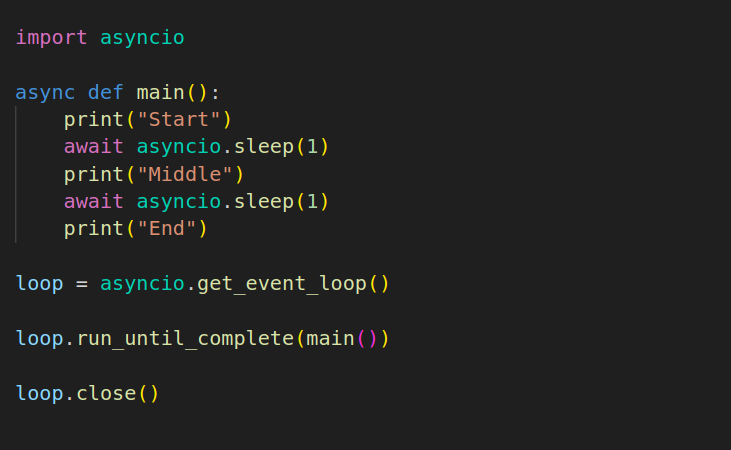
Tasks and Futures
Tasks represent the execution of coroutines in an event loop. Futures are placeholders for values that will be available in the future, often associated with the result of an asynchronous operation. Example:
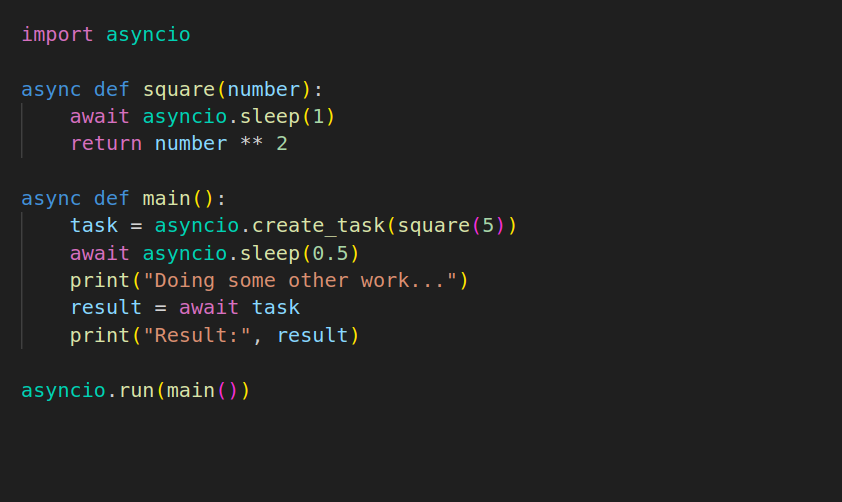
Synchronization Primitives
asyncio provides synchronization primitives like locks, semaphores, and queues to coordinate and control access to shared resources in async code. Example using a semaphore:
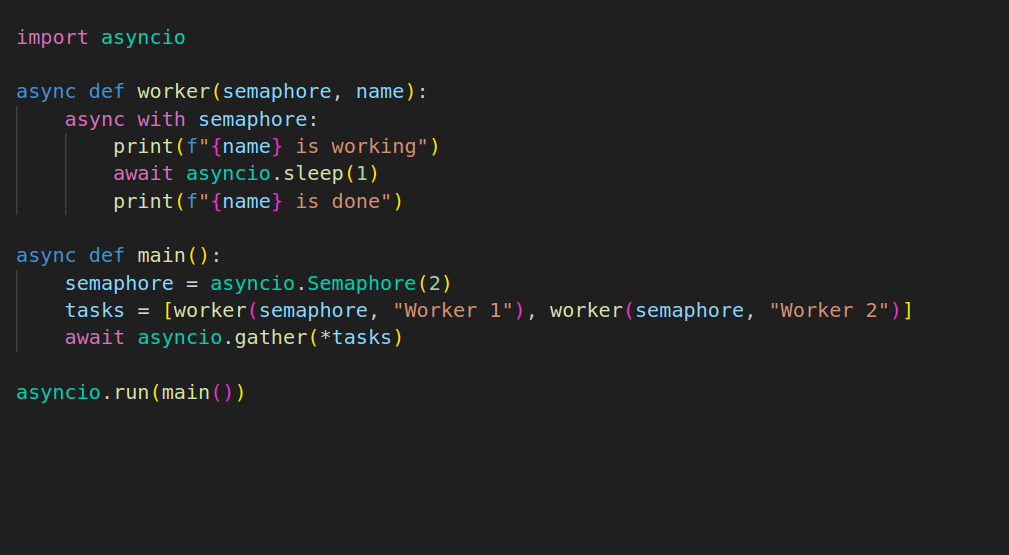
3. Async and Await
async def Functions Functions defined using async def are coroutines that can contain await expressions. They can pause their execution until the awaited operation completes. Example:

await Expression
The await keyword is used within coroutines to pause execution until the awaited asynchronous operation finishes. It ensures that the event loop continues processing other tasks in the meantime.
4. Concurrency vs. Parallelism
Understanding the difference between concurrency and parallelism is crucial in async programming. Concurrency involves managing multiple tasks, while parallelism involves executing multiple tasks simultaneously using multiple CPU cores.
5. Use Cases
Network Operations Async programming is particularly useful for handling network operations, such as making HTTP requests, where waiting for responses can lead to significant time wastage. Example using aiohttp:
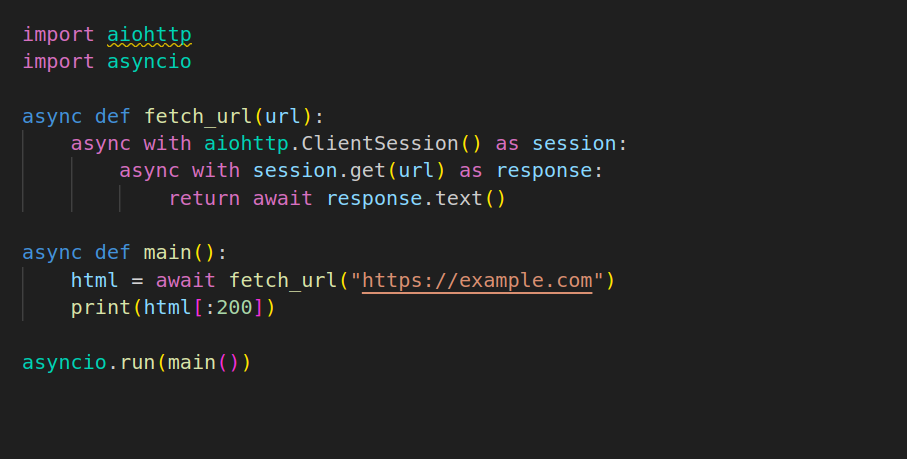
File I/O
File I/O operations can be slow, especially when dealing with large files. Using async file I/O can help prevent blocking the event loop while waiting for disk operations to complete. Example:
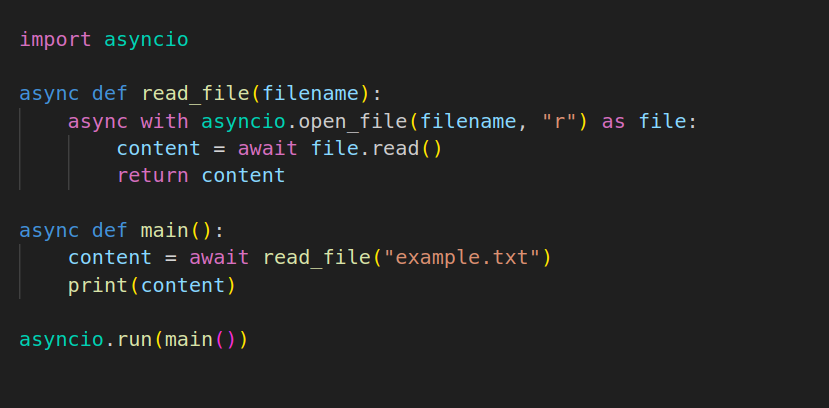
Web Scraping
Web scraping often involves making multiple requests to different websites. Asynchronous programming can improve the efficiency of web scraping by allowing concurrent retrieval of data. Example using beautifulsoup4 and aiohttp:
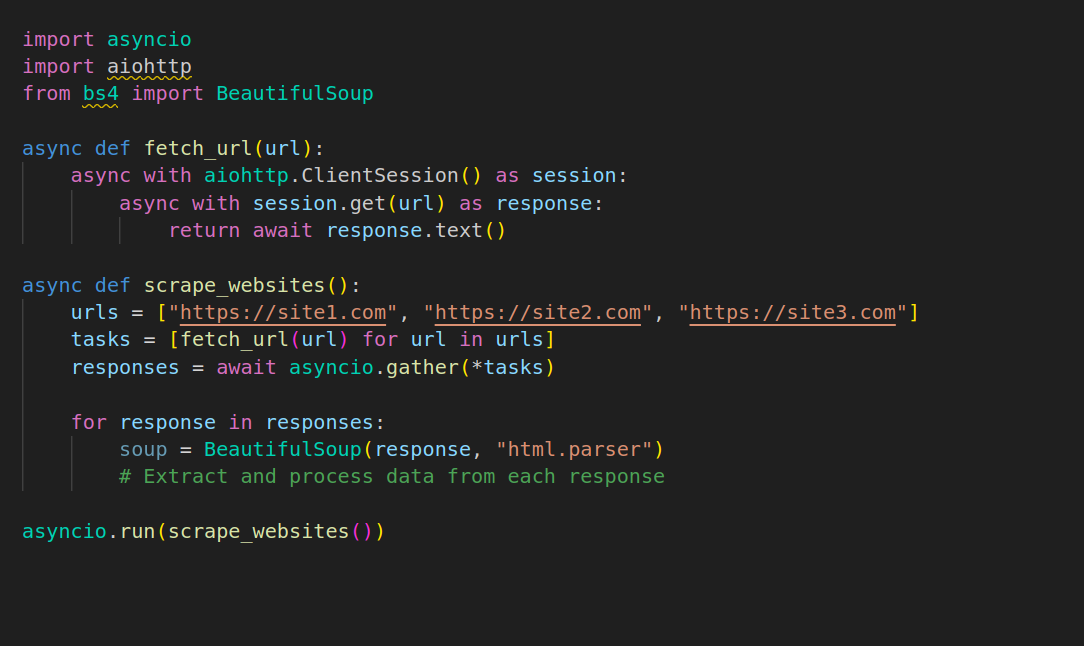
6. Best Practices
Avoiding Blocking Calls Blocking calls can halt the entire event loop. Using async-friendly libraries and techniques helps prevent such situations.
Error Handling
Proper error handling is crucial in async programming. Unhandled exceptions in coroutines can terminate the event loop prematurely.
Testing Async Code
Testing async code requires special consideration. Libraries like pytest-asyncio can help write effective unit tests for async code.
7. Conclusion
Asynchronous programming in Python using the asyncio library can greatly improve the efficiency of programs that involve I/O-bound and network-bound operations. By allowing tasks to execute concurrently, Python developers can create more responsive and scalable applications.
 Python Development
Python Development PHP Development
PHP Development React Js Development
React Js Development Vue Js Development
Vue Js Development Node Js Development
Node Js Development Angular Development
Angular Development Continuous Integration
Continuous Integration Automated Deployment
Automated Deployment Monitoring and Logging
Monitoring and Logging Security Integration
Security Integration Backup and Recovery Automation
Backup and Recovery Automation Collaborative Tools Integration
Collaborative Tools Integration RPA Strategy and Roadmap
RPA Strategy and Roadmap RPA Tool Selection
RPA Tool Selection RPA Bot Development
RPA Bot Development RPA Maintenance and Support
RPA Maintenance and Support Custom RPA Solution
Custom RPA Solution RPA Vendor Assessment
RPA Vendor Assessment AWS Lambda
AWS Lambda AWS CloudFormation
AWS CloudFormation Azure Deployment
Azure Deployment DNS Mapping
DNS Mapping Data Visualization
Data Visualization Big Data Processing
Big Data Processing Data Modeling
Data Modeling Database Administration
Database Administration Cloud Data Services
Cloud Data Services Data Migration
Data Migration ETL Orchestration
ETL Orchestration Data Collaboration
Data Collaboration Responsive Web Design
Responsive Web Design Web Redesigning
Web Redesigning Mobile App Design
Mobile App Design UI/UX Design
UI/UX Design Wordpress Theme Design
Wordpress Theme Design Online Portfolio Design
Online Portfolio Design SEO
SEO SMO
SMO PPC
PPC ORM
ORM



